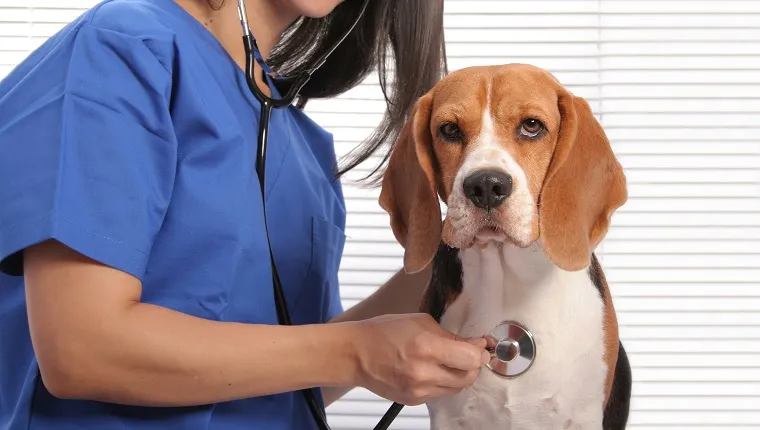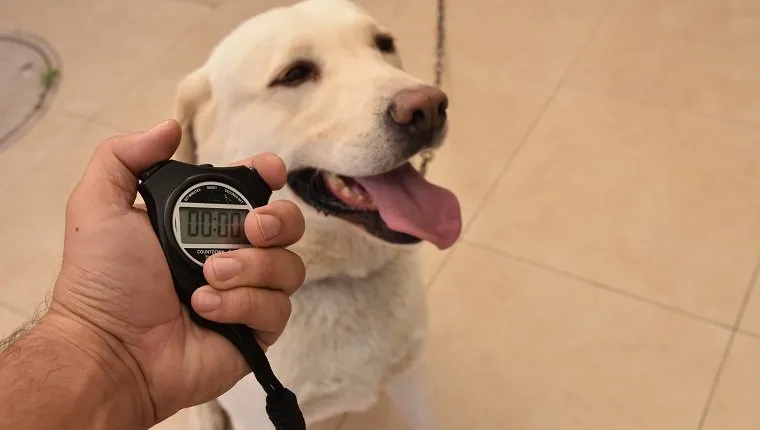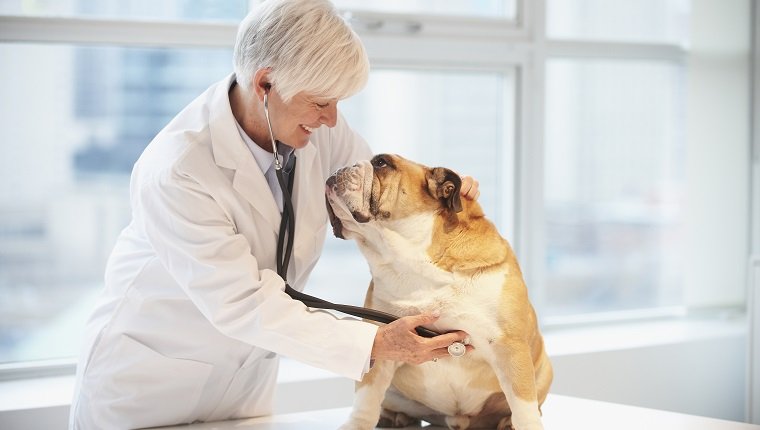What is a dog’s normal resting heart rate? What should a dog’s body temperature be? Is your dog breathing too fast?
These are questions you may be wondering about if your dog is feeling under the weather and you need a frame of reference. You may need to know this information if your dog’s pulse, temperature, or respiration aren’t what you think they should be.
A dog’s regular vitals are different from a human’s, so while your normal temperature might be 98.6 degrees Fahrenheit, your dog’s might be completely different.
If your dog’s health stats aren’t what you’re expecting, then you should see your veterinarian as soon as possible so they can run tests and address any health issues. Here are a few normal stats that you should expect to see in healthy dogs.
Normal Heart Rate For Dogs

The normal pulse or heart rate for dogs can vary depending on the dog’s age and size. The resting heart rates of small dogs and puppies are faster than the heart rates of large or adult dogs.
Puppies can have resting pulse rates of 160 to 200 beats per minute when they are born, which can go as high as 220 beats per minute at two weeks of age. Up to 180 beats per minute may be normal until a year of age.
Large adult dogs can have a resting heart rate of 60 to 100 beats per minute, while small adult dogs can have a normal heart rate of 100 to 140 beats per minute.
Changes In Your Dog’s Heart Rate
Heart rate can increase with normal exercise or emotional responses like excitement or stress. However, this is not often a cause for concern unless it results in health complications or worsens an existing condition.
On the other hand, there could be a problem if you notice changes in your dog’s resting heart rate while they’re relaxed. This can be a sign of many serious heart or blood conditions, or it could be a sign that your dog is out of shape and at risk for health issues.
If your dog’s resting heart rate is outside of the usual range, then it’s a good idea to see a vet.
How To Measure Your Dog’s Heart Rate
To measure your dog’s heart rate, you’ll need a stopwatch or clock that can show you a count in seconds.
You can feel your dog’s heart beat with your hand on your dog’s left side behind the front leg, or you can check the inside of the top of your dog’s hind leg.
Count the beats you feel for 15 seconds and multiply the result by four to get the beats per minute.
You should take the measurement multiple times, as it can vary a bit. You should also do this when your dog is healthy and at rest to establish a normal baseline so you can tell if something is wrong.
Normal Body Temperature For Dogs

Like humans, the temperature of a dog’s body can vary a bit while still being completely healthy.
The usual temperature of a healthy, normal, adult dog is 100 to 102.5 degrees Fahrenheit, which averages out to about 101.3 degrees Fahrenheit.
Puppies have a bit cooler normal body temperature between 94 and 97 degrees Fahrenheit until they’re about a month old.
Changes In Your Dog’s Body Temperature
There are many health issues or environmental factors that can cause a dog’s body temperature to vary outside of the normal range. When a dog’s body temperature goes above 103 or below 100 degrees Fahrenheit, it is cause for concern.
If your dog’s temperature is that far out of the normal range, then it’s time for a vet visit.
Fevers can be symptoms of a variety of conditions that range from mild to life threatening, and overheating can easily occur if a dog spends time in a hot environment for too long without the chance to cool down.
A low body temperature can also be a sign of serious complications or can be the result of hypothermia from exposure to extreme cold.
How To Measure Your Dog’s Body Temperature
You can measure your dog’s temperature with a thermometer. Depending on the type of thermometer, you’ll need to measure rectally or by ear.
Rectal thermometers should be used with medical lubricant to avoid injury or discomfort. A traditional glass thermometer should be inserted one to two inches into the rectum for two minutes for an accurate reading.
Digital thermometers are easier to use, especially if they can read temperature via the ears.
Normal Respiration Rate For Dogs

The normal rate of breathing for dogs at rest can vary a lot.
On average, a dog will take 24 breaths per minute, but it can be as low as 10 breaths per minute or as high as 35 breaths per minute and still be considered normal.
This is for resting respiration rate only. Any physical activity or change in emotional state can result in increased breathing rate and still be a healthy response.
Changes In Your Dog’s Respiration
There are many conditions that can change the resting respiration rate for dogs.
Anemia, heart failure, lung disease, or any other respiratory disorder can cause high breathing rate, as well as simply being out of shape and overweight.
Shock, poisoning, physical injury, and many other health problems can cause slower or shallower breathing.
You should see a veterinarian if you notice a change in your dog’s resting breathing rate. If your dog is panting, breathing very quickly, and has glassy eyes, it can be a sign of overheating, and you should get to the vet immediately.
How To Measure Your Dog’s Respiration
To measure your dog’s breathing rate, use a stop watch or clock that shows a count in seconds.
Count the number of times your dog’s chest rises in 15 seconds and multiply by four to get the breaths per minute.
Do this multiple times to get an accurate reading and check while your dog is healthy and at rest to establish a baseline that you can use to measure against later.
Do you ever check your dog’s vitals so you know when something’s wrong? Have you found it helpful? Then let us know in the comments below!









